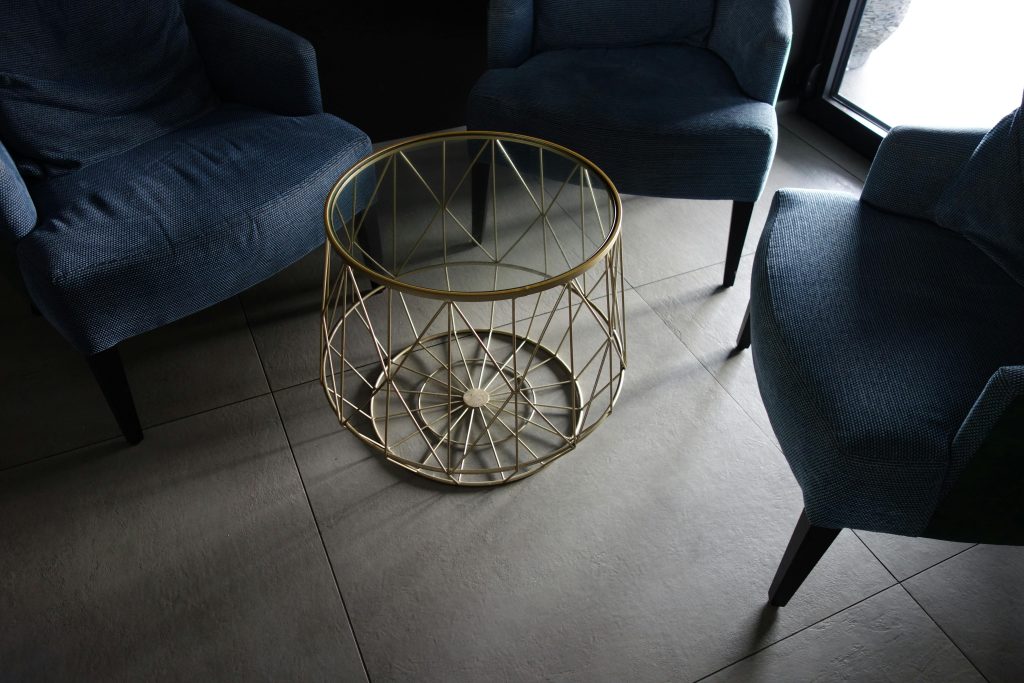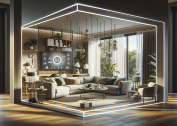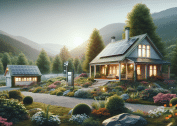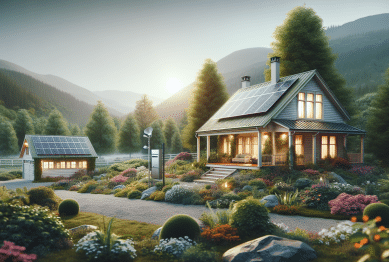In today’s fast-paced world, creating spaces that encourage relaxation has become increasingly important for maintaining mental and physical well-being. Stress, overstimulation, and constant connectivity make it essential to design environments that allow for mental clarity, emotional balance, and physical comfort. Modern design trends prioritize calming aesthetics, functionality, and sensory appeal, ensuring that both residential and commercial spaces can serve as retreats from everyday pressures.
Designing spaces that encourage relaxation is not only about aesthetics; it is also about understanding human psychology, ergonomics, and environmental factors that impact well-being. This article explores current trends, practical strategies, and evidence-based approaches to crafting spaces that foster relaxation.

Understanding the Psychology of Relaxation
Before designing a calming space, it’s important to understand what promotes relaxation on a psychological level. Research in environmental psychology suggests that certain elements—such as natural light, colors, textures, and layout—can significantly influence mood and stress levels.
Key principles include:
- Biophilic Design: Incorporating natural elements such as plants, wood, and stone can reduce stress and enhance mental restoration (Kellert & Calabrese, 2015).
- Color Psychology: Soft, muted colors like blues, greens, and earth tones are associated with calmness, while harsh, bright colors can increase arousal and anxiety.
- Spatial Flow: Open layouts and uncluttered spaces promote a sense of freedom and reduce mental strain.
Understanding these psychological principles allows designers to create environments that actively support relaxation rather than merely decorating a room.
Minimalism and Clutter-Free Spaces
Minimalist design has become a major trend in creating relaxing spaces. By reducing clutter and emphasizing simplicity, minimalist spaces reduce cognitive overload and provide a visual sense of calm.
Tips for implementing minimalism:
- Declutter Regularly: Remove unnecessary items that do not serve a functional or aesthetic purpose.
- Use Multi-Functional Furniture: Furniture that serves multiple purposes helps reduce clutter while maintaining utility.
- Focus on Quality over Quantity: Choose a few high-quality pieces that provide comfort and functionality rather than filling space with many items.
According to research published in Personality and Social Psychology Bulletin, cluttered environments are linked to increased stress levels and decreased focus, emphasizing the importance of minimalism in relaxation-oriented spaces (Saxbe & Repetti, 2010).
Integrating Nature and Outdoor Elements
Biophilic design extends beyond simply adding plants; it involves integrating natural light, water features, and outdoor views into the environment. These elements have been shown to reduce stress, enhance mood, and improve cognitive function.
Strategies include:
- Indoor Plants: Incorporating greenery improves air quality and provides visual relief. Plants such as snake plants, peace lilies, and ferns are low-maintenance options.
- Water Features: Small fountains or indoor water walls introduce soothing sounds and movement.
- Natural Light: Maximizing daylight through large windows or skylights supports circadian rhythms and overall well-being.
The Human Spaces report highlights that workplaces with access to natural elements report a 15% higher level of well-being among employees, underscoring the value of integrating nature into any relaxation-focused space (Human Spaces, 2015).
Sensory Considerations: Sound, Smell, and Texture
Designing a space for relaxation requires engaging multiple senses, not just sight. Sound, scent, and tactile experiences contribute significantly to perceived calmness.
- Sound: Soft background music or natural sounds like flowing water or birdsong can reduce stress. Noise-cancelling panels or rugs also help minimize disruptive noise.
- Scent: Aromatherapy using lavender, chamomile, or sandalwood promotes relaxation. Scent diffusers or candles can subtly enhance the ambiance.
- Texture: Soft fabrics, plush cushions, and tactile surfaces provide comfort and invite physical relaxation. Layering different textures, such as wool throws or velvet pillows, can add warmth and coziness.
Incorporating these sensory elements ensures that spaces are not only visually pleasing but also provide a holistic experience that promotes well-being (Herz, 2009).
Furniture and Layout for Comfort
Ergonomics plays a critical role in relaxation. Furniture should support proper posture and encourage comfort without sacrificing aesthetics.
Key considerations include:
- Seating: Comfortable seating with lumbar support encourages extended relaxation periods. Recliners, chaise lounges, or ergonomic chairs are effective choices.
- Spatial Arrangement: Arranging furniture to promote ease of movement and avoid congestion enhances mental relaxation. Circular or semi-circular seating layouts can encourage social interaction and a sense of community.
- Multi-Functional Zones: Create separate zones for different relaxation activities, such as reading, meditation, or stretching. This allows individuals to choose their preferred mode of relaxation without disruption.
Well-designed furniture and layouts cater to both physical comfort and psychological ease, making relaxation more accessible.
Technology Integration for Calm
While technology is often associated with stress, thoughtfully integrated tech can enhance relaxation.
Examples include:
- Smart Lighting: Adjustable lighting systems can change color temperature and brightness to match mood or time of day.
- Automated Climate Control: Smart thermostats maintain optimal temperatures, reducing discomfort and promoting relaxation.
- Meditation Apps and Sound Systems: Devices and apps can guide mindfulness exercises, provide calming sounds, or manage noise levels for a serene environment.
A study in the Journal of Environmental Psychology found that environmental control through technology, such as lighting and temperature adjustments, significantly enhances comfort and relaxation in both residential and workplace settings (Wargocki et al., 2017).
Color Trends in Relaxation Spaces
Modern design spaces emphasizes color palettes that support calmness and stress reduction. Current trends focus on natural and muted tones that complement biophilic elements.
Popular choices include:
- Soft Blues and Greens: Evoke natural elements like water and foliage.
- Warm Neutrals: Beige, taupe, and soft gray create a grounding effect.
- Pastel Accents: Light peach or lavender can introduce subtle warmth without overstimulation.
Using color thoughtfully in walls, furniture, and décor enhances the overall soothing effect of the space.
Mindful Spaces for Mental Health
Incorporating areas dedicated to mindfulness, meditation, or gentle physical activity further encourages relaxation. Mindful spaces are designed to reduce cognitive load and promote focus, creativity, and emotional balance.
Strategies include:
- Meditation Corners: Small, quiet areas with cushions, soft lighting, and minimal distractions.
- Yoga or Stretching Zones: Open spaces with mats and minimal décor facilitate movement and stress release.
- Reading Nooks: Comfortable chairs, good lighting, and organized shelves create a peaceful retreat for mental rest.
Research from the American Psychological Association highlights that environments designed for mindfulness can significantly reduce stress and enhance overall well-being (APA, 2019).
Conclusion
Designing spaces that encourage relaxation is a multifaceted process involving psychology, aesthetics, ergonomics, and sensory design. By integrating natural elements, thoughtful color schemes, ergonomic furniture, and technology that enhances comfort, individuals can create environments that reduce stress and foster well-being. Whether for homes, offices, or communal areas, these spaces provide necessary retreats that allow people to recharge and improve mental and physical health. Modern design approaches ensure that relaxation is not an afterthought but a central focus, making everyday environments supportive, inviting, and restorative.









